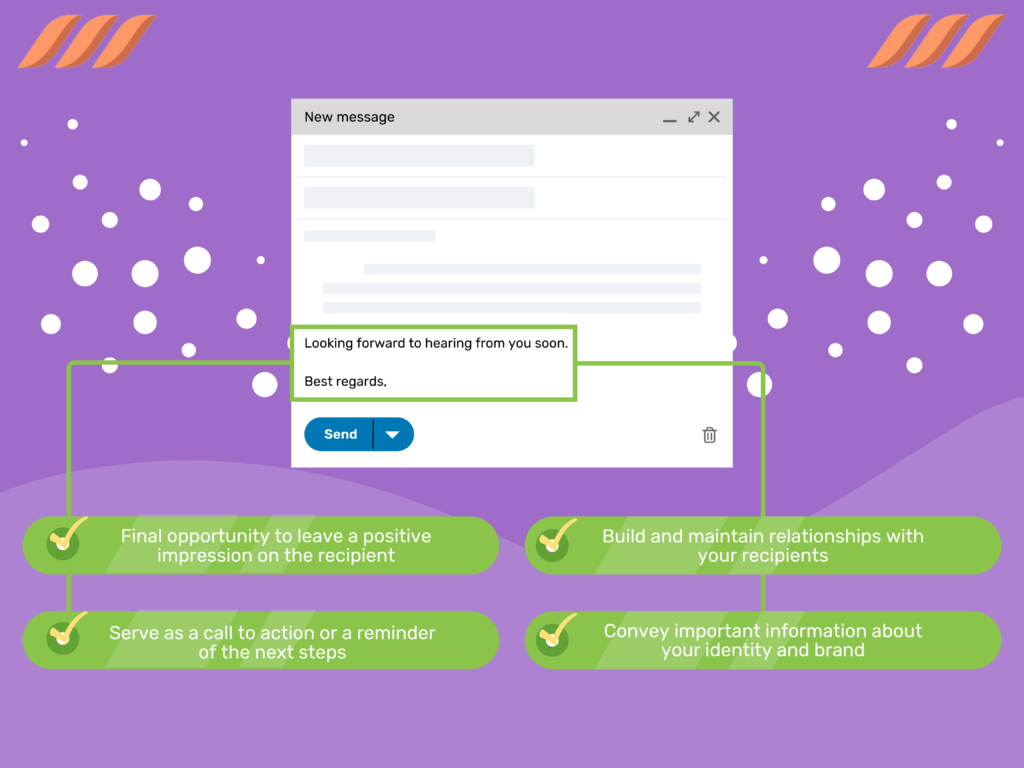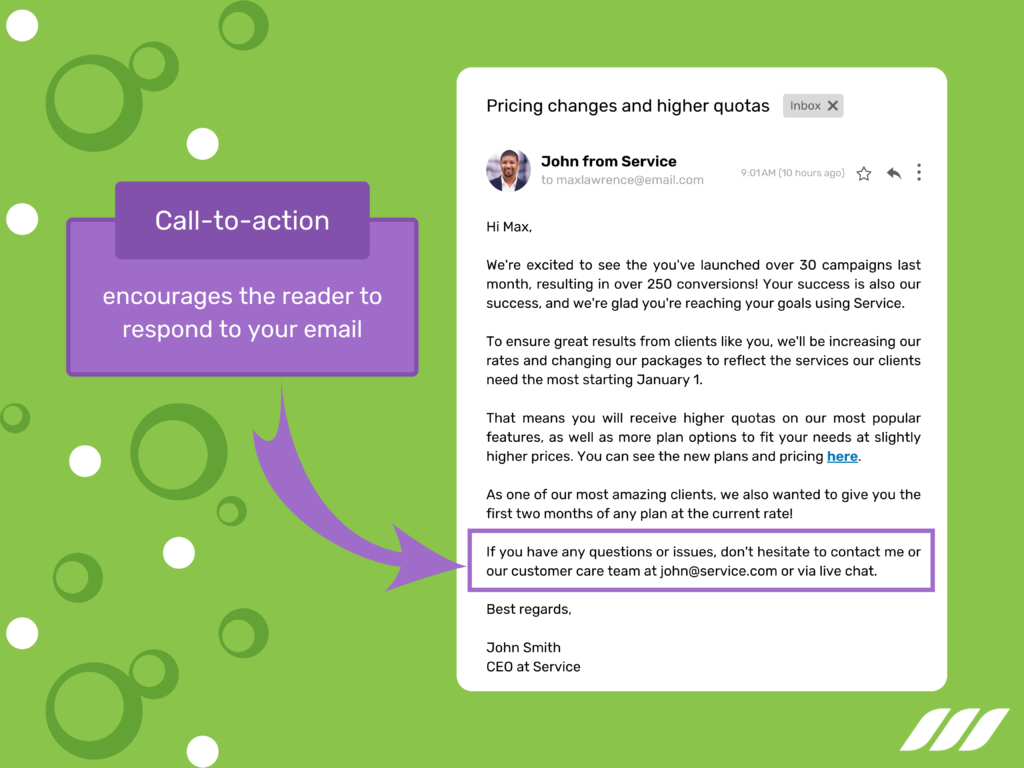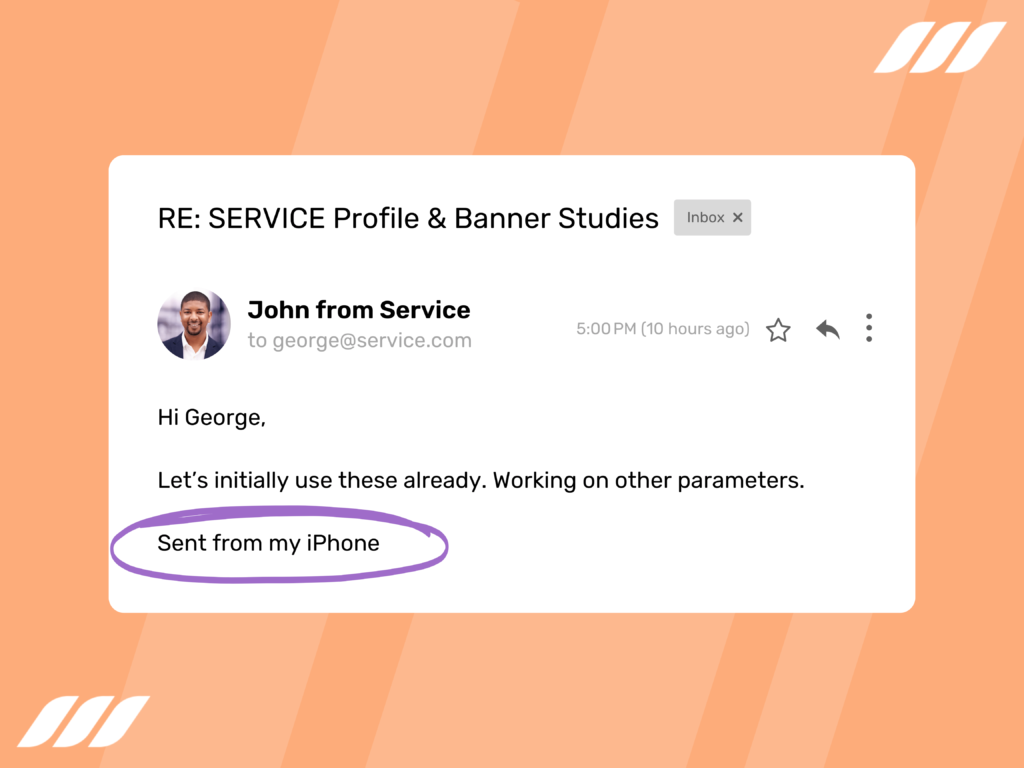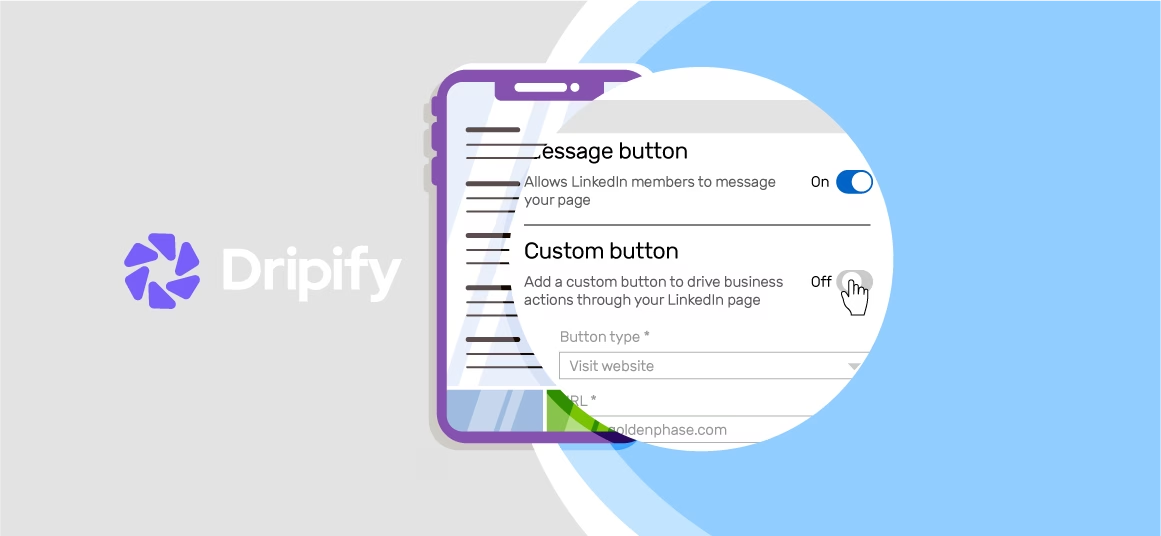Whether you’re emailing a colleague, a client, or a friend, how you end your email can make a big difference in how your message is received. After all, the way you end an email can have a lasting impact on the recipient’s impression of you.
A well-crafted email closing can leave a positive impression, while a poorly executed one can leave the recipient with a negative perception of you or your brand. That’s why it’s important to put some thought into how you end your emails.
- Why Are Email Endings Important?
- Different Ways to End an Email Depending on the Circumstances
- Formal Business Communication
- Informal Business Communication
- Emails to Professors or Authority Figures
- Friendly or Personal Emails
- Emails Asking for Help
- How to End an Email [19 Examples]
- 1. Best regards
- 2. Kind regards
- 3. Sincerely
- 4. Regards
- 5. All the best
- 6. Take care
- 7. Have a great day
- 8. Looking forward to hearing from you
- 9. Thank you for your time
- 10. Warmly
- 11. With gratitude
- 12. Cheers
- 13. Until next time
- 14. Wishing you all the best
- 15. With appreciation
- 16. Stay in touch
- 17. Let me know if you need anything else
- 18. Take it easy
- 19. Catch up with you later
- How to Write the Best Email Closing Lines
- 1. Keep it Short and Simple
- 2. Match the Tone of Your Email
- 3. Use a Call to Action
- 4. Show Appreciation
- 5. Use Your Name
- 6. Consider the Recipient
- What Closing Lines You Should Avoid in Your Email
This article will discuss 19 different ways to end an email and how to choose the best email closing lines for different situations. From professional emails to personal messages, we’ll cover a range of options to help you find the right tone and style for your communications.
Whether you’re looking to add a touch of personality to your messages or simply want to ensure that your emails are well-received, these tips and templates on how to end an email will help you sign off on the right note.
Read also: How to Start an Email
Why Are Email Endings Important?

How you end an email can make the difference between a successful email and one that is ignored or deleted. Your email sign off is your final opportunity to leave a positive impression on the recipient. A professional and polite email closing line can show that you are respectful, thoughtful, and willing to maintain a good relationship with the recipient.
If you choose a professional and respectful way to end an email, it can show that you are serious and thoughtful about your communication.
On the other hand, if you choose a casual or inappropriate closing line, it can make you seem careless or unprofessional. As such, it is essential to choose the right email ending that matches the tone and purpose of your email.
What’s more, email endings can help you build and maintain relationships with your recipients. If you choose a friendly and warm closing line, it can show that you care about the recipient and value your relationship with them. This can lead to better communication, collaboration, and even business opportunities in the future.
On the other hand, if you choose a cold or impersonal sign off line, it can make the recipient feel undervalued and less likely to engage with you in the future.
Email endings can also serve as a call to action or a reminder of the next steps.
For example, if you choose an email closing sentence such as “Looking forward to hearing from you soon,” it can encourage the recipient to respond promptly.
Similarly, if you choose a closing line such as “Please let me know if you need anything else,” it can show that you are willing to provide further assistance if needed.
In addition, email endings can convey important information about your identity and brand. If you choose a consistent and memorable closing line, it can help you establish a strong personal or professional brand.
For example, if you always use “Best regards” as your closing line, it can become a part of your signature and help you stand out from other communicators.
Given the importance of email closing lines, you should pick the right email ending that matches the tone and purpose of your email and helps you achieve your communication goals. By paying attention to email endings, you can become a more effective communicator and build stronger relationships with your recipients.
Read also: Best Time to Send Cold Emails
Different Ways to End an Email Depending on the Circumstances
Before we delve into the various email closing lines you can use, it is important to consider the context and purpose of your email. The way to end an email may differ depending on the situation, the nature of the email, the recipient, and the relationship you have with them.
For example, if you need to write a formal email to your boss or a client, you may want to use a more formal closing line. On the other hand, if you are writing an email to a friend, you may want to use a more casual closing line.
Depending on the circumstances, there are different ways to end an email. Let’s explore some common scenarios and discuss how to end an email in each situation.
Formal Business Communication
Wondering how to end an email professionally. Well, when sending emails for formal business communication, it is important to use professional language and a formal tone. The email should be structured clearly and concisely.
Common ways to end a formal business email include:
- Best regards;
- Kind regards;
- Sincerely;
- Respectfully;
- Yours truly.
These endings show professionalism, respect, and a willingness to collaborate. Avoid using casual or overly familiar language, as it may come across as unprofessional.
Informal Business Communication
In informal business communication, it is acceptable to use a more relaxed tone but still remain respectful and professional.
Common ways to end an informal business email include:
- Regards;
- All the best;
- Take care;
- Cheers;
- Have a great day.
These endings show a level of familiarity but maintain professionalism. Avoid using overly casual or inappropriate language, as it may reflect poorly on your professionalism.
Emails to Professors or Authority Figures
How to end an email to a professor, you ask? When sending emails to professors or authority figures, it is important to show respect and professionalism.
Common ways to end an email to a professor or authority figure include:
- Best regards;
- Sincerely;
- Respectfully;
- Thank you for your time and consideration.
These endings show respect and appreciation for their time and expertise. Avoid using casual or informal language, as it may be perceived as disrespectful.
Friendly or Personal Emails
Want to send a friendly or personal email? Wondering how to end a friendly letter? Well, you’re free to use a more casual tone for starting and ending the email. But it is still important to remain respectful and appropriate.
Common ways to end a friendly or personal email include:
- Take care;
- Talk soon;
- Looking forward to hearing from you;
- Warmly;
- Best wishes.
These endings show a level of familiarity and warmth.
Emails Asking for Help
When sending emails asking for help, it is important to be polite and respectful and know how to end an email asking for help. Here’re some tips on how to end an email with thank you notes when asking for help.
- Thank you for your time;
- Thank you for considering my request;
- I appreciate your time and assistance;
- Please let me know if you need any further information.
These endings show gratitude and appreciation for their time and assistance. Avoid using demanding or entitled language.
Read also: Best Email Marketing Automation Tools
How to End an Email [19 Examples]
Now that you’re aware of how to adapt email closing lines depending on the circumstances, let’s look at email closing line examples. You can use these examples on how to end an email for inspiration or as templates to write better email closings more efficiently.
1. Best regards
This is a classic and professional way to end an email. It is a polite and respectful closing line in formal and informal settings.
Example:
Best regards,
[Your Name]
2. Kind regards
Similar to “best regards,” this closing line is also formal and respectful. You can use it to show appreciation or gratitude towards the recipient.
Example:
Kind regards,
[Your Name]
3. Sincerely
“Sincerely” is a traditional and formal closing line that is commonly used in professional situations, such as in business or academic emails.
Example:
Sincerely,
[Your Name]
4. Regards
“Regards” is a simple and professional closing line that can be used in formal and informal settings.
Example:
Regards,
[Your Name]
5. All the best
This is a friendly and informal email closing you can use in personal or casual emails.
Example:
All the best,
[Your Name]
6. Take care
“Take care” is a warm and friendly closing line. You can use it when you want to show concern or care for the recipient.
Example:
Take care,
[Your Name]
7. Have a great day
This is an upbeat and friendly closing line that can be used to end a positive or uplifting email.
Example:
Have a great day,
[Your Name]
8. Looking forward to hearing from you
This is a professional and polite email closing sentence. You can use it when you are expecting a response from the recipient.
Example:
Looking forward to hearing from you,
[Your Name]
9. Thank you for your time
This is a polite and respectful email closing remark that can be used when you want to show appreciation for the recipient’s time and effort.
Example:
Thank you for your time,
[Your Name]
10. Warmly
“Warmly” is a friendly and informal closing line that you can use in personal or casual communications.
Example:
Warmly,
[Your Name]
11. With gratitude
This closing line expresses gratitude and can be used to show appreciation for the recipient’s help or assistance.
Example:
With gratitude,
[Your Name]
12. Cheers
“Cheers” is a casual and friendly closing line that can be used in personal or informal emails.
Example:
Cheers,
[Your Name]
13. Until next time
This is a friendly and informal sign off phrase. You can use it to maintain a good relationship with the recipient.
Example:
Until next time,
[Your Name]
14. Wishing you all the best
This is one of the best email closing remarks you can use to show that you can about the recipient’s well-being. It sounds warm and friendly.
Example:
Wishing you all the best,
[Your Name]
15. With appreciation
This closing line expresses appreciation and can be used to show gratitude for the recipient’s help or assistance.
Example:
With appreciation,
[Your Name]
16. Stay in touch
This is one of the cool sign-off phrases you can use to indicate that you want to maintain a good relationship with the recipient.
Example:
Stay in touch,
[Your Name]
17. Let me know if you need anything else
This closing line expresses your willingness to help and can be used to show that you are available for further assistance.
Example:
Let me know if you need anything else,
[Your Name]
18. Take it easy
This is a casual and friendly closing line that can be used in personal or informal emails.
Example:
Take it easy,
[Your Name]
19. Catch up with you later
This email sign off phrase is friendly and informal. You can use it when you want to maintain a good relationship with the recipient.
Example:
Catch up with you later,
[Your Name]
Read also: Email Outreach Tracking [Tips and Tricks]
How to Write the Best Email Closing Lines
To write the best email closing lines, it is important to consider the context and purpose of your email. Here are some tips to help you choose the best email closing lines:
1. Keep it Short and Simple
Your email sign off phrase should be short, simple, and concise. A lengthy closing line can make your email look unprofessional and may discourage the reader from responding. It is best to keep your closing line to no more than seven words.
2. Match the Tone of Your Email
Your closing line should match the tone of your email. If you send a formal email, your closing line should be professional and respectful. If you send an informal email, your closing line can be more casual and friendly. Ensure that your closing line is consistent with the tone of your email.
3. Use a Call to Action

A call to action is a statement that encourages the reader to take action. Using a call to action in your closing line can encourage the reader to respond to your email.
Some examples of calls to actions include:
- Please let me know if you need any further information;
- I look forward to hearing from you;
- Please reply at your earliest convenience.
4. Show Appreciation
Showing appreciation in your closing line can leave a positive impression on the reader. It shows that you value their time and effort.
Here’re some examples of showing appreciation through your email closing line:
- Thank you for your time and consideration;
- I appreciate your assistance;
- Thanks for your help.
5. Use Your Name
Using your name in your closing line can help the reader remember who you are. It can also help build a personal connection with the reader.
Some examples of using your name in your closing line include:
- Best regards, [Your Name];
- Sincerely, [Your Name];
- Take care, [Your Name].
6. Consider the Recipient
Consider the recipient of your email when choosing your closing line. If you are emailing a colleague or friend, you can use a more casual closing line. If you are emailing a client or someone you don’t know well, it is best to use a more formal closing line.
Here’re some examples of casual closing lines you might want to use:
- Take care;
- Talk soon;
- Best wishes.
Some examples of formal closing lines include:
- Best regards;
- Sincerely;
- Respectfully.
Read also: Best Email Drip Campaign Examples
What Closing Lines You Should Avoid in Your Email
While there are many good email closing lines, there are also some closing lines you should avoid.
Here are some examples of closing lines to avoid:
- Thanks in advance: “Thanks in advance” is a closing line that can come off as presumptuous. It assumes that the recipient will do what you have asked of them, and can be seen as pushy or demanding;
- “Love” or “XOXO”: These closing lines are too casual and inappropriate for professional emails;
- “Yours truly” or “Yours faithfully”: These closing lines are outdated and too formal for most emails;
- “Take care of yourself”: While this closing line may seem friendly, it can come across as patronizing or condescending;
- “Sent from my iPhone”: This closing line is unprofessional and can make you seem careless;
- No closing line: If you don’t include a closing line, your email can seem abrupt and impersonal.

Conclusion
The closing line of your email is an important part of your communication. It can leave a lasting impression on the recipient and can determine whether they respond to your email or not.
Using the tips and examples provided in this article, you can ensure that your email is professional, respectful, and effective.
Always take the time to choose a closing line that reflects your personality and the nature of your relationship with the recipient. A good email sign off phrase will show that you are respectful, thoughtful, and willing to maintain a good relationship with the recipient.


![Email Outreach Tracking [Tips, Tricks and Tools]](https://dripify.io/wp-content/uploads/2025/02/11-7-png.avif)
![Create a Prospecting Plan [+8 Prospecting Methods]](https://dripify.io/wp-content/uploads/2025/02/11-png.avif)